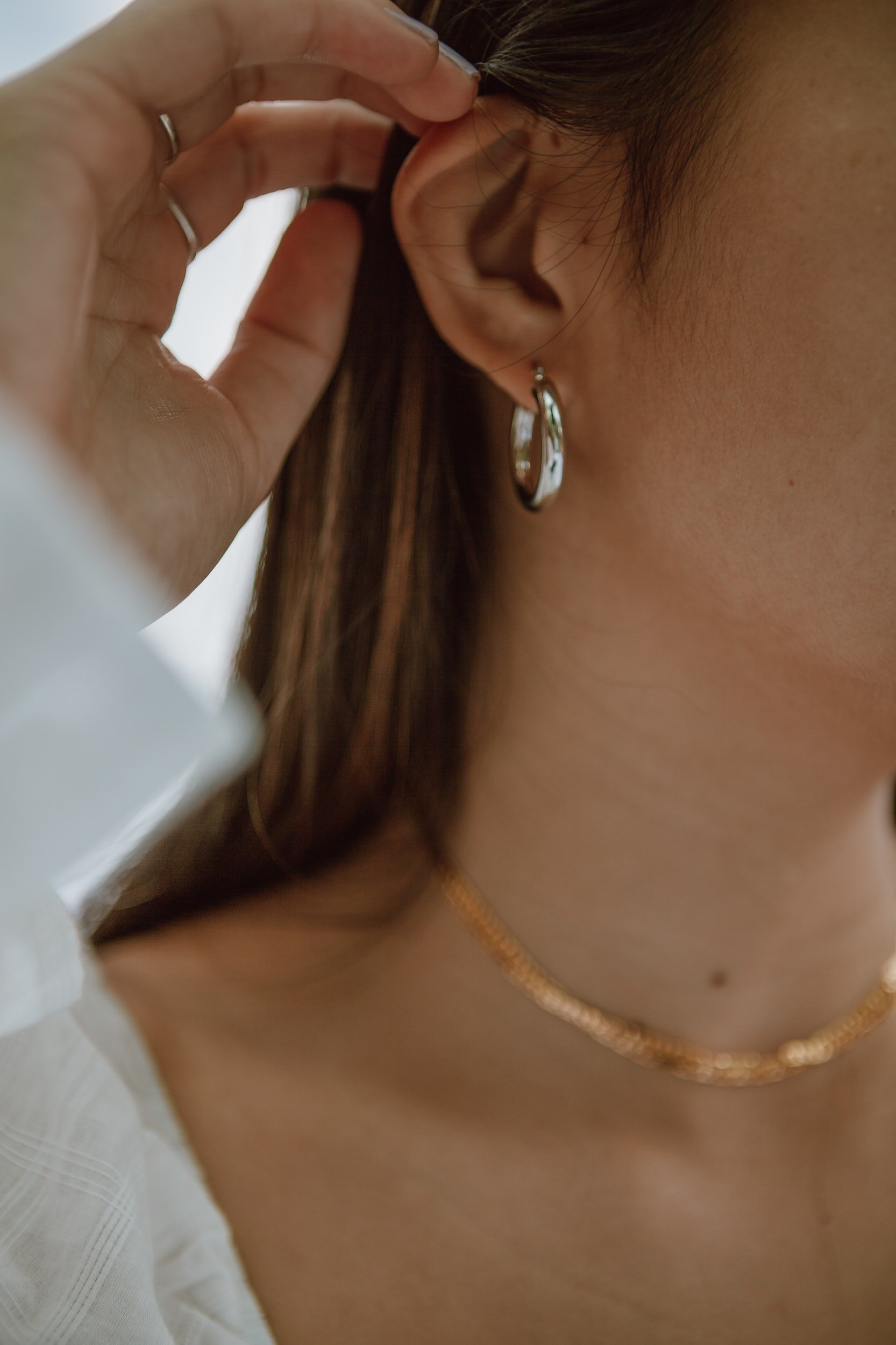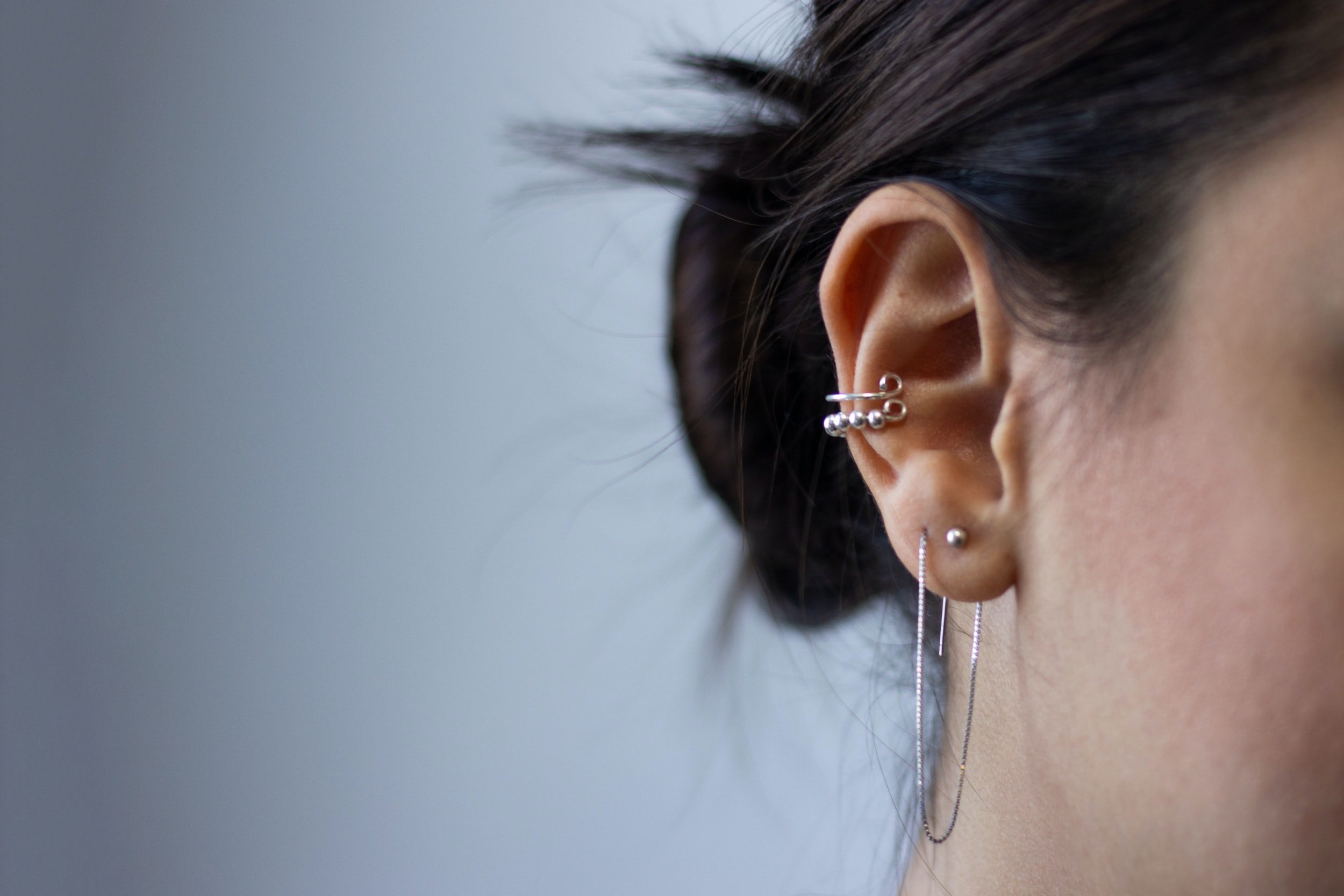Ear Piercings 101: A Beginner's Guide to Looking Like a Human Pincushion
Whether you're a piercing virgin or a seasoned pro, there's always something new to learn when it comes to piercing your ears. If you're anything like me, you've probably spent hours scrolling through Pinterest, Instagram, and TikTok for ear Professional piercing ideas, only to end up feeling more overwhelmed than inspired. Fear not, my fellow ear enthusiasts! This beginner's guide to ear piercings will give you all the knowledge you need to confidently rock your own ear bling without looking like a hot mess.
We'll start with the basics: the types of ear piercings you can get. From the classic lobe piercing to the trendy daith and helix piercings, there's a wide range of piercing options available to suit your personal style and pain tolerance. We'll break down each type of piercing, including their placement, healing time, and jewelry options. Whether you want a subtle single piercing or a full-on constellation of piercings, we've got you covered.
But before you go running off to your nearest piercing studio, it's important to understand the piercing process and aftercare. We'll go over the nitty-gritty details of how to prepare for and care for your freshly pierced ears. From choosing the right jewelry to avoiding infections, we'll give you all the tips and tricks to ensure a successful piercing experience.
And of course, we can't forget the fun part: choosing your jewelry! We'll show you all the different types of ear jewelry available, from delicate studs to statement hoops, and offer ideas for mixing and matching to create your own unique ear stack. We'll even throw in some fun facts about the history of ear jewelry and current piercing trends to keep you in the know.
The Anatomy of Ear Piercings
To get the most out of your piercing experience, it’s important to know the anatomy of the ear and what options are available to you. Let’s take a closer look at the different parts of the ear that can be pierced!
Starting with the lobe, this is probably the most common area to pierce due to its ease and level of comfort. It's also one of those piercings that never goes out of fashion. You could say it's like short-sleeve shirts - always in style, no matter how many times new trends come and go!
The cartilage is another popular spot for piercings, but we often refer to this as cartilage ear piercing because two holes are generally made in each side. You might not think twice about it today, but when people first started doing the double ear piercing some years ago, it caused quite a stir! The tragus is located just above and in front of your ear canal and looks like a tiny shelf-like structure leading up from your lobe towards your temple. Some people find this spot quite sensitive but if you have strong tragus muscles (yes they do exist!), then this will help reduce pain during the process.
Next up is the rook which is located just above your tragus and has an almost cone-shaped shape. This area can sometimes be more painful than other areas due to having less fleshy tissue around that area – so make sure you prepare yourself properly before getting it done!
Also, there’s the helix which is located on the uppermost part of your outer ear curve. This area can be incredibly versatile as far as jewelry styles go – so if you want something unique, this might be the spot for you!
Now that you know all about the different parts of your ear that can be pierced – let’s offer some tips on which one might be best for you: If you're feeling particularly brave or are ready to make a bold statement – consider going for something less common such as double piercing or cartilage piercing as these tend to stand out more than others (especially double!). On the other hand, if you're new to piercings and don't want too much pain involved – start off with a basic lobe piercing as this tends to hurt less than others and still makes a subtle statement without being too drastic.
The Piercing Process
Before you take the plunge, there are a few important steps you should take to ensure that your piercing experience is safe and pleasant. So let’s break down the entire piercing process, from prepping your ears to finding the right jewelry for your cute ear piercings.
Step 1 – Find a Professional Piercer
When it comes to piercing your ears, safety should always be your top priority. That’s why it’s important to find a professional piercer who has experience and knowledge in the field. Look for a piercer who operates out of a clean and sterile environment and uses only high-quality materials.
Step 2 –Prepare Your Ears
Before you can even think about getting that shiny new piece of jewelry, you need to make sure that your ears are completely clean and free from dirt or bacteria. Start by washing them with warm water and a mild soap. Then dry them off with a clean cloth or paper towel.
Step 3 – Choose the Right Jewelry
For Your Cute Ear Piercings: Now it’s time for the fun part – picking out some sparkly new pieces of jewelry! Make sure that whatever type of jewelry you choose is made from hypoallergenic materials such as stainless steel or titanium so that it won’t irritate your skin or cause an allergic reaction. Also pay close attention to the size as this will determine how comfortable it will be once pierced through the ear lobe.
Step 4 – Mark the Spot
Once you have chosen the perfect piece of jewelry, it’s time to mark where exactly on the ear lobe you want it placed. This is usually done with a marker pen or an ear piercing chart which provides measurements for each area on the ear lobe so that all piercings look symmetric and evenly spaced apart.
Step 5 – Piercing Time!
Now here comes the moment of truth! Take several deep breaths to calm yourself down beforehand, but don’t worry - this part shouldn’t be too painful if done correctly by an experienced professional piercer using high-quality equipment.
Step 6 – Post Piercing Care
Aftercare is just as important as beforecare when it comes to keeping infection at bay while healing takes place in the newly pierced area. Keep in mind these few tips - keep the freshly pierced area clean by gently cleansing twice daily with warm water & non-irritating soap; avoid swimming pools & hot tubs until healing has completed; avoid changing stud styles until fully healed (at least 3 months); use alcohol-free lotion over newly pierced area 2-3 times daily until healed; avoid touching/ disturbing any new piercing unnecessarily; & lastly do not remove any stud (not even just for cleaning) until fully healed!
Types of Jewelry
In this section, we’ll explore all the options available, so read on to discover which type of jewelry works best for your personal style!
If you’re looking to make a subtle statement with your ear piercing then studs could be the ideal choice. They come in a variety of shapes, sizes and materials – from basic metallic styles to colorful gemstones – so you can easily find something that suits your taste and budget. Studs are also extremely versatile, making them suitable for all areas of the ear such as helix, tragus and conch piercings. If you want to go for an edgier option then consider industrial or target piercings – these two-hole piercings give you the opportunity to show off two studs (usually in mirrored placements) for maximum impact.
If it’s more of an eye-catching look you’re after then hoop earrings are the perfect choice. Hoops come in a variety of sizes from small dainty designs up to large statement pieces – giving you plenty of options when it comes to selecting one that complements your face shape. A great tip is to go with a thinner hoop if your ears are on the smaller size, while larger hoops look best on those blessed with more prominent lobes! Hoops are perfect for cartilage piercings but can also be worn in lobe piercings too – just make sure they can be safely secured before inserting them into your ears.
Finally let’s take a look at barbells. These trendy accessories have grown in popularity over recent years due mainly to their stylish yet low-key aesthetic. Barbells come in many forms including plain metal designs, brightly colored acrylic pieces or even intricate floral designs – so there is plenty of room for self-expression here! These pieces work great with an industrial ear piercing and target ear piercing as well as surface bars; plus they provide some extra security should your jewelry become snagged or caught on something during wear!
Whether you opt for classic studs or daring barbells; fun hoops or industrial style earrings; one thing is certain: there is no shortage of options when it comes to choosing the right jewelry for your next ear piercing adventure! So don't forget that whatever type of piece you choose it needs to complement both your sense of style and face shape - not forgetting any medical advice given by professionals if needed - before settling on the right option (or pair!) for you!
Frequently ASKED questions
-
A: The most painful ear piercing varies from person to person, as pain tolerance and sensitivity can differ. However, piercings that involve cartilage, such as the rook, daith, and industrial ear piercings, are generally considered to be more painful than those that go through soft tissue, such as the lobe or helix piercings. It's important to research and choose a reputable piercer who uses proper techniques and sterilization methods to minimize pain and reduce the risk of complications.
-
A: It's a matter of personal preference, and different people have different tastes and styles. What might be attractive to one person may not be appealing to another. It's best to choose a piercing that you feel comfortable and confident with and reflects your personality and individuality. Ultimately, the most attractive piercing is the one that makes you feel good about yourself.
-
A: The least painful ear piercing is generally considered to be the lobe piercing, which is done on the fleshy part of the earlobe. This area has a lot of blood flow and nerve endings, making it less sensitive than other areas of the ear. Additionally, the piercing process is usually quick and straightforward, resulting in minimal discomfort for most people.
READ MORE…
Read up our article on how much is a nose piercing at a tattoo shop?
Check out the history of piercings.
Here are 4 body piercing misconceptions that you shouldn’t believe.




